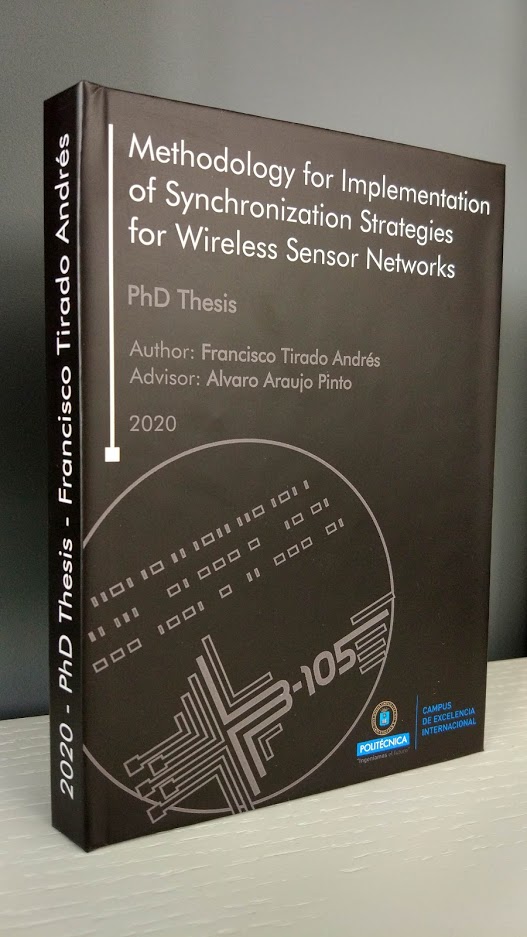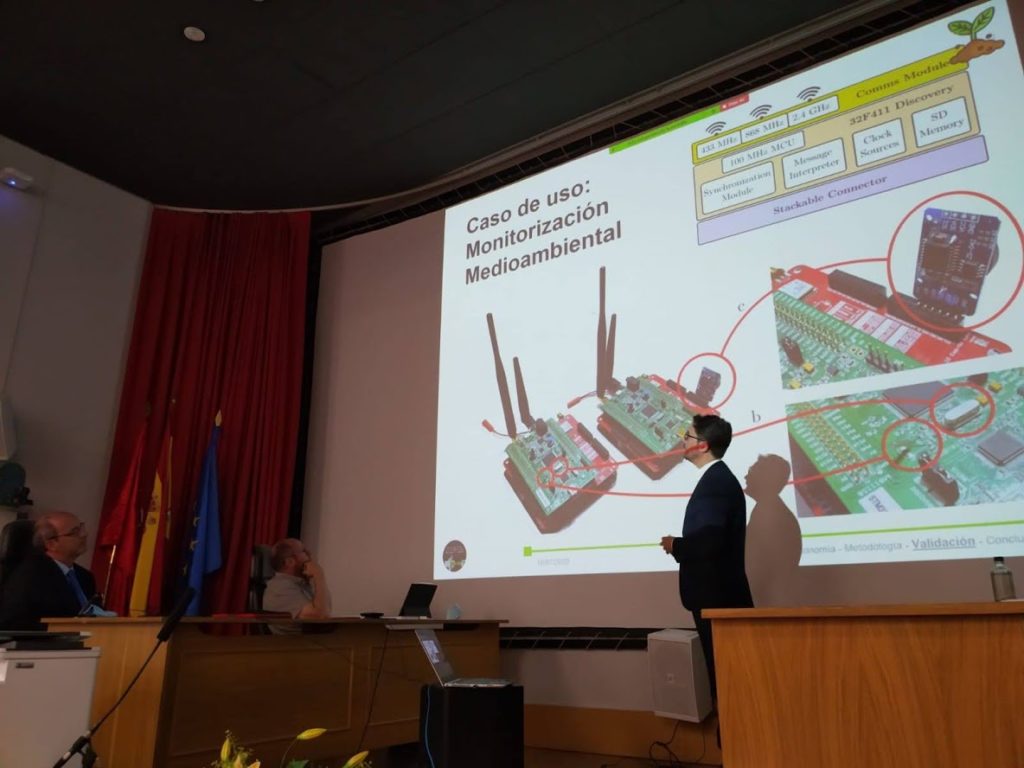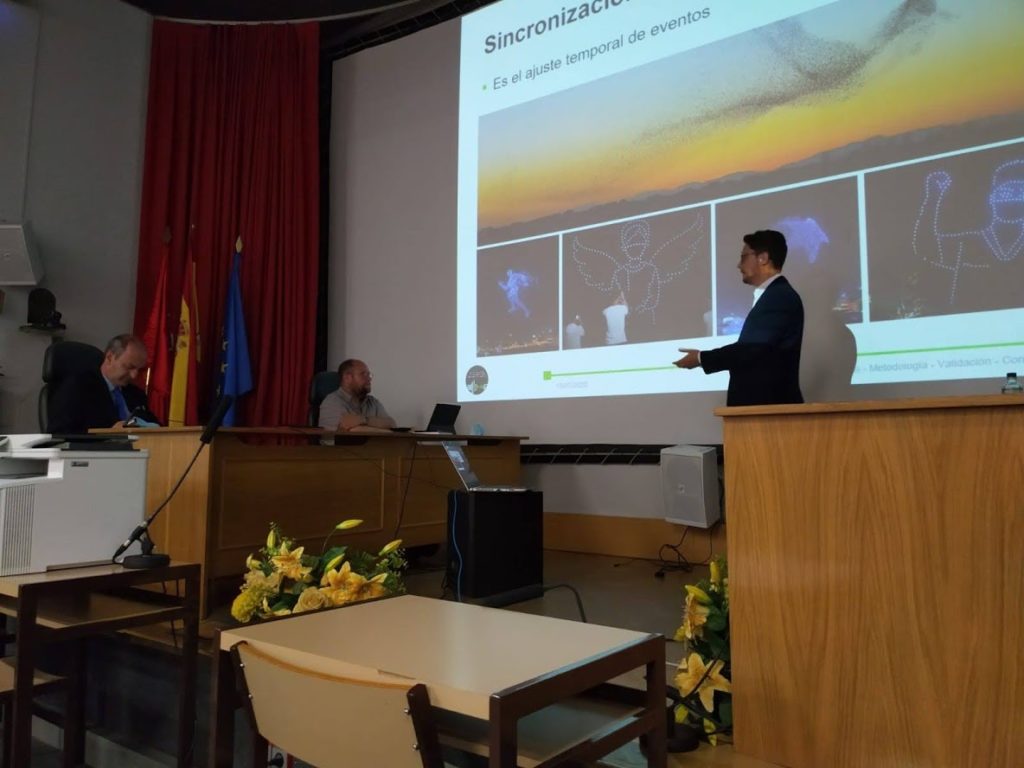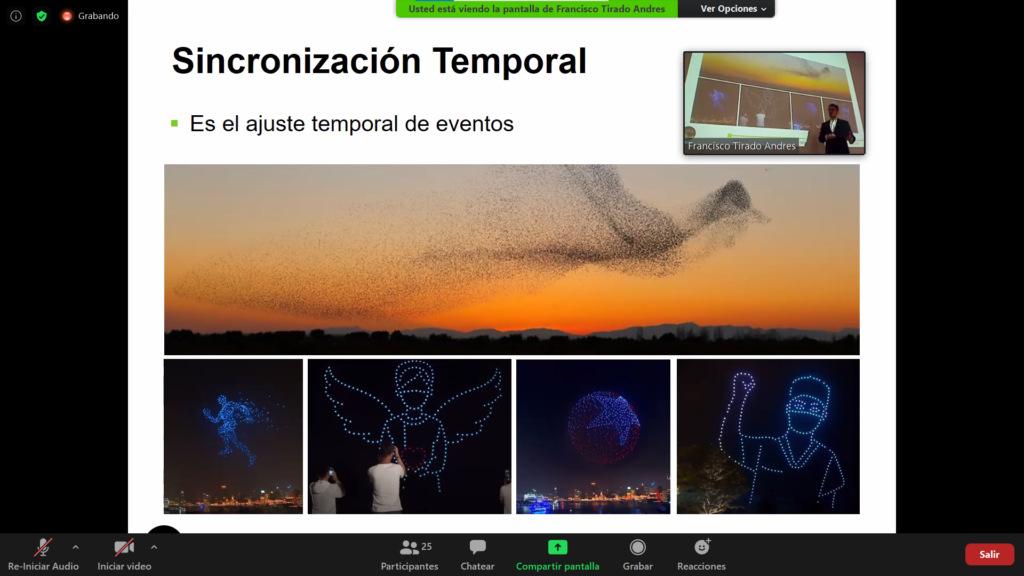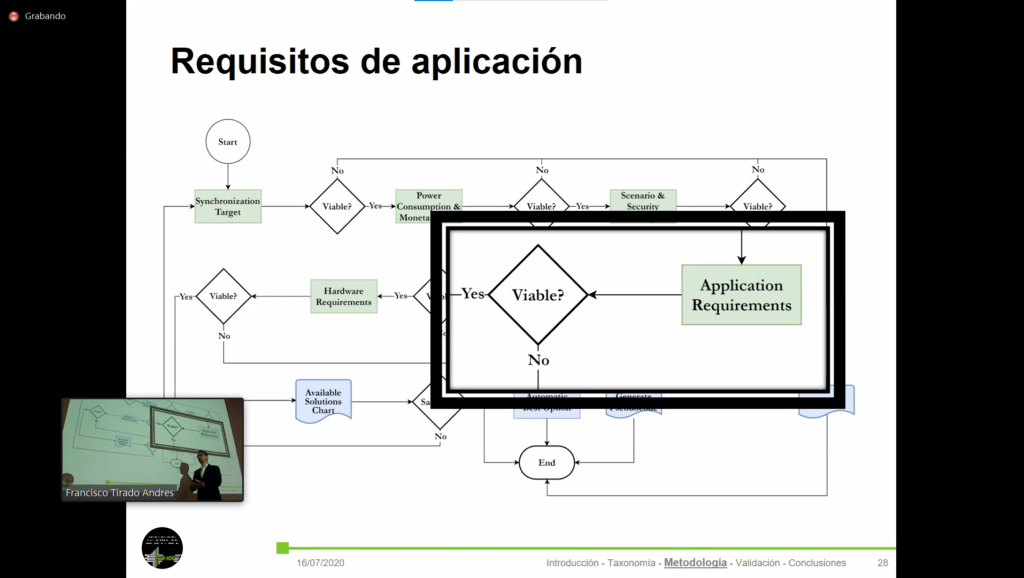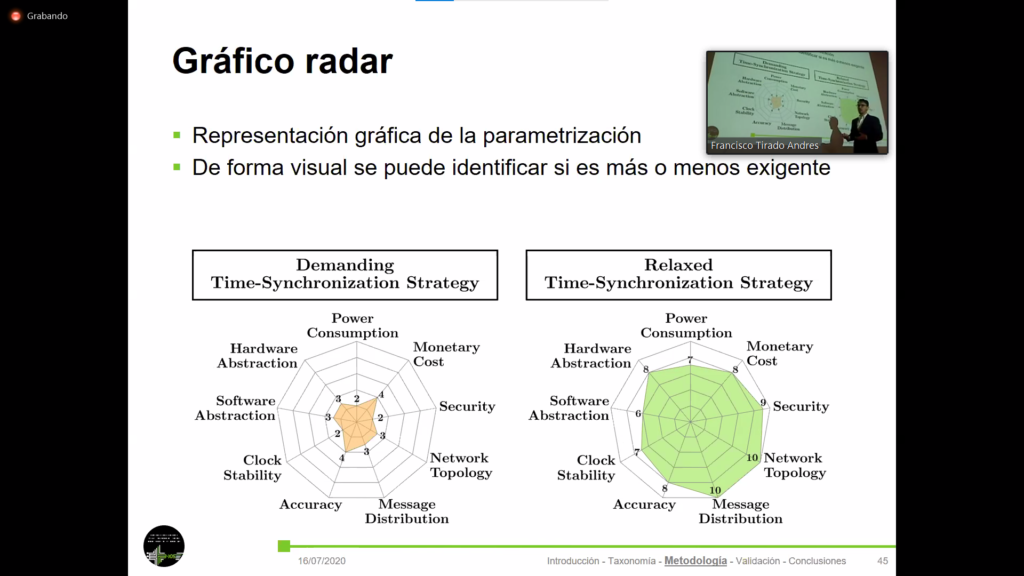On July 16, 2020, our colleague Francisco Tirado-Andrés read and defended his PhD Thesis entitled “Methodology for implementation of Synchronization Strategies for Wireless Sensor Networks” under the direction of Dr. Alvaro Araujo Pinto.
This work was defended in an unusual way. Half of the tribunal was in person, but the other half of the tribunal was evaluating it via video conference. Even with this new form of presentation, the Thesis work was valued very positively by the entire tribunal, giving it the highest score: outstanding.
In addition, the entire tribunal issued a confidential and secret vote, which unanimously allowed the work to be awarded the mention of “cum laude”.
We leave you some links where you can find more information about this PhD:
- Page where you can access a demo of the tool developed for the execution of the methodology
- Article published in Sensors (Q1) where the core of the Doctoral Thesis is explained.
- Poster where you can see a summary of the PhD
- The initial proposal that was made about this thesis work
- F. Tirado-Andrés, A. Rozas, and A. Araujo, “A Methodology for Choosing Time Synchronization Strategies for Wireless IoT Networks,” Sensors, vol. 19, iss. 16, 2019
- F. Tirado-Andrés and A. Araujo, “Performance of clock sources and their influence on time synchronization in wireless sensor networks,” International Journal of Distributed Sensor Networks, vol. 15, iss. 9, 2019.
- J. H. García-Palacios, I. M. Díaz, J. C. Mosquera, J. M. Soria, and F. Tirado-Andres, “Learning dynamic analysis of structures using handy and affordable equipment. On the way of smart structures,” in IV International Conference on Structural Engineering. Education Without Borders, 2018, pp. 134-142.
- R. Rodriguez-Zurrunero, F. Tirado-Andres, and A. Araujo, “YetiOS: an Adaptive Operating System for Wireless Sensor Networks,” in 2018 IEEE 43rd Conference on Local Computer Networks Workshops (LCN Workshops), 2018, pp. 16-22.
- J. García-Palacios, J. M. Soria, I. M. Díaz, and F. Tirado-Andres, “Modal tracking with only a few of sensors: application to a residential building,” in 8th European Workshop On Structural Health Monitoring (EWSHM 2016), 2016.
- J. García-Palacios, J. M. Soria, I. M. Díaz, and F. Tirado-Andres, “Ambient modal testing of a double-arch dam: the experimental campaign and model updating,” in 13th International Conference on Motion and Vibration Control (MoViC 2016), 2016.
- J. García-Palacios, F. Tirado-Andres, J. M. Soria, I. M. Díaz, and A. Araujo, “Effects of time synchronization on operational modal analysis,” in 6th International Operational Modal Analysis Conference (IOMAC 2015), 2015.
- A. Araujo, J. García-Palacios, J. Blesa, F. Tirado, E. Romero, A. Samartín, and O. Nieto-Taladriz, “Wireless Measurement System for Structural Health Monitoring With High Time-Synchronization Accuracy,” IEEE Transactions on Instrumentation and Measurement, vol. 61, iss. 3, pp. 801-810, 2012.
- A. Araujo, F. Tirado-Andres, J. García-Palacios, and J. Blesa, “High precision structural health monitoring system using wireless sensor networks,” in 3rd International Symposium on Life-Cycle Civil Engineering (IALCCE 2012), 2012, p. 1093–1101.
- J. García-Palacios, A. Samartín, R. Ortega, F. Tirado-Andres, A. Araujo, O. Nieto-Taladriz, J. Blesa, E. Romero, E. Reynders, G. D. Roeck, L. He, and F. Percivale, “Some advances in extensive bridge monitoring using low cost dynamic characterization,” in International Conference on Experimental Vibration Analysis for Civil Engineering Structures (EVACES 2011), 2011, pp. 417-424.

